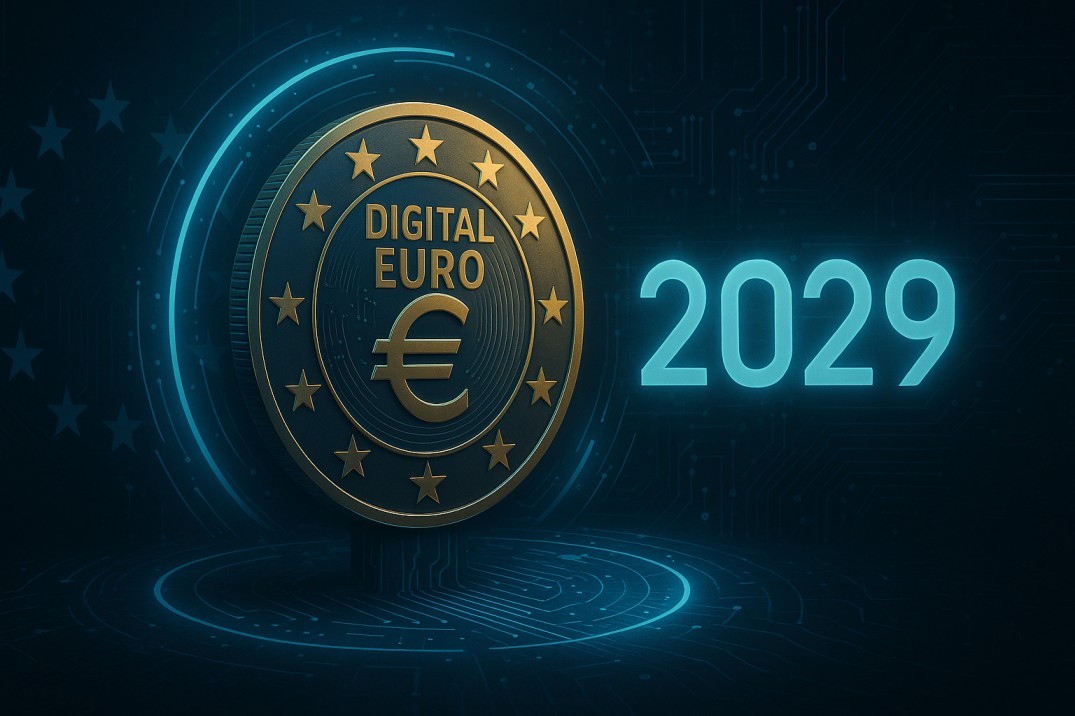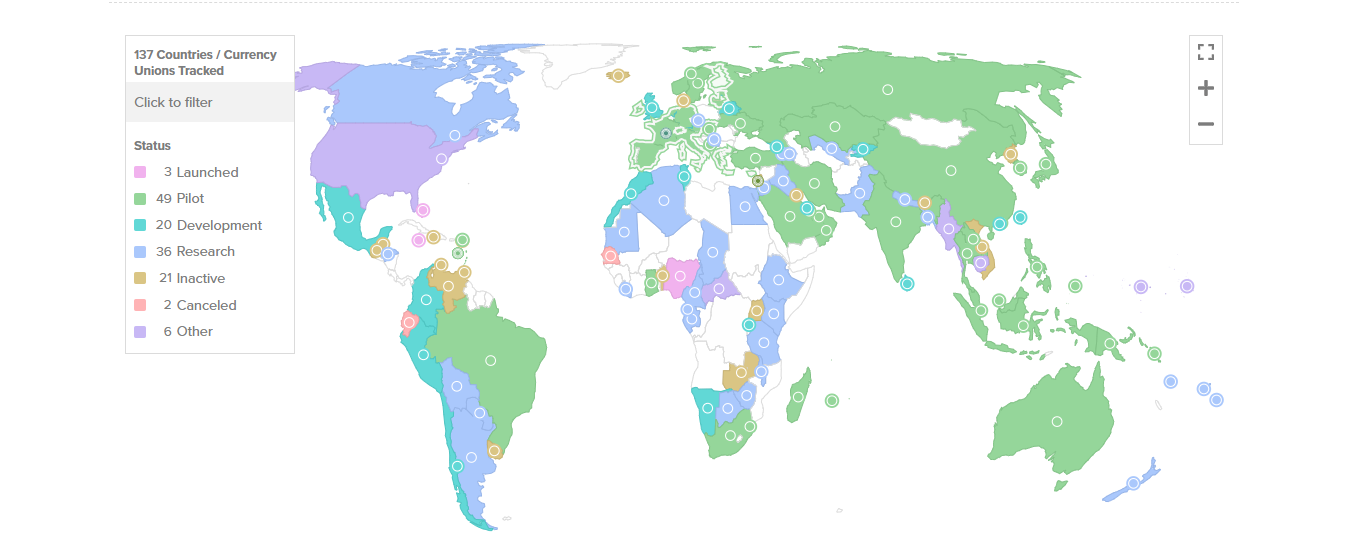TL;DR
- The European Central Bank (ECB) is moving to the next phase of its "digital euro" project, with a target issuance year of 2029, provided that necessary legislation is passed.
- ECB executive board member Piero Cipollone emphasised the digital euro's role in ensuring the "benefits of cash also in the digital era," and highlighted it will "enhance the resilience of Europe's payment landscape, lower costs for merchants, and create a platform for private companies to innovate, scale up and compete."
- While the pilot phase is expected to begin around 2027, the full rollout hinges on the European Parliament, European Council and Commission approving legislation by 2026.
- Only three jurisdictions-Nigeria, The Bahamas and Jamaica-have launched central-bank digital currencies (CBDCs) so far.
The euro-area's central bank has formally moved its digital-currency project from investigation into the preparation phase. Since November 2023, the ECB has been developing the "digital euro" scheme rule-book, selecting service-providers, initiating experimentation platforms and engaging with banks, merchants and stakeholders to test usability, identity and payment flows.
Now, board member Piero Cipollone publicly stated that if legislation is passed in the course of 2026, a pilot exercise could begin in 2027 and the Eurosystem should be ready for a potential first issuance during 2029.
In his words:
This quote captures the ECB's framing of the digital euro as not just a technological upgrade, but a strategic instrument to preserve Europe's financial autonomy and digital-payment infrastructure.
Why 2029 and what's required to get there?

The timeline is ambitious but conditional. Key milestones include:
Legislation: The EU institutions (Parliament, Council, Commission) must agree on a regulatory framework-covering legal tender status, private-sector access, privacy protections, wallet-design and holding-limits-ideally by mid-2026.
Pilot phase: Once rules are in place, a pilot could kick off in 2027, enabling limited issuance in a controlled environment to test technology, distribution channels, offline payments and merchant acceptance.
Full issuance: After successful pilot(s), the ECB anticipates a readiness for full rollout by 2029, assuming the preparatory work goes according to plan.
The 2029 target reflects both technological confidence and a recognition of the legislative and institutional complexity. Commentators note that the ECB estimates about 2.5 to 3 years post-legislation will be needed to implement full issuance.
Strategic motivations
The push for the digital euro has both economic and geopolitical rationale. The euro-area remains reliant on U.S.-based payments infrastructure (e.g., Visa, Mastercard) and forms of digital-dollar-pegged stablecoins. ECB economists have warned that this dependency exposes Europe to external stewardship of its payments ecosystem and potential economic coercion.
By establishing a central-bank-backed digital currency, the Eurosystem seeks to:
- Preserve "money that is central-bank money" for households and firms in a digital era.
- Maintain payment system resilience (for example during a cyber-attack or bank disruption).
- Provide a public-good payments infrastructure, enabling innovation by private firms on top of it.
- Support Europe's strategic sovereignty in finance, especially as stablecoins and non-European wallets proliferate.
Global context: how far behind is Europe?
Despite the ambition, CBDCs remain relatively rare globally. According to the Atlantic Council's CBDC tracker, only three jurisdictions-Nigeria, the Bahamas and Jamaica-have fully launched retail-CBDCs to date.

Other countries are at various stages: pilots, research, legislation. Europe is catching up, but the complexity of 20+ euro-area states, shared currency arrangements and regulatory consensus adds extra layers compared to single-nation pilots.
Potential implications if launched
If the digital euro arrives by 2029 as planned, implications include:
Modernised payments: Citizens could hold euro-digital wallets directly, paying merchants with digital euro, peer-to-peer, 24/7 and possibly offline.
Stablecoin competition: The ECB envisages the digital euro playing a base-layer role (public money), on top of which private stablecoins could flourish under regulation.
Banking-system changes: Banks may need to adjust their business models if central-bank money becomes directly accessible to end-users.
Global shift in currency infrastructure: Europe would join China and other acting jurisdictions with CBDCs, altering the global payments architecture and corporate strategy for fintechs and banks.
How realistic is the timeline?
While 2029 is the target, many believe it remains optimistic:
- EU legislation historically moves slowly, and digital-euro design debates are complex.
- Member-state consensus is still evolving, particularly on issues like privacy, limits and bank role.
- Technical implementation at a pan-euro-area scale remains ambitious.
Nevertheless, the fact that the preparatory phase is concluding and the ECB is setting concrete dates suggests renewed momentum.
Final Thought
The ECB's announcement that 2029 is the tentative target for a digital euro launch marks a defining moment for Europe's monetary-digital future. If achieved, it would mean the euro area embraces a new era of public-digital money-not just as an experiment, but as a foundational payment infrastructure.
The timeline may shift, the design may evolve, but the message is clear: Europe intends to stay in the game of digital money, not just as a follower but as a player shaping payments for the next generation.











